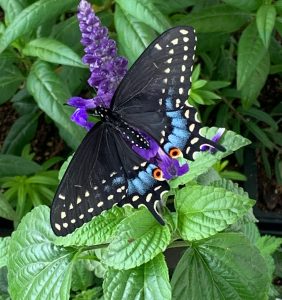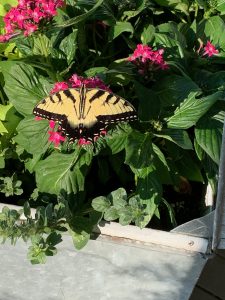Ever wondered how butterflies fly? It’s pretty cool to see them fluttering through the air, but it’s hard to tell exactly how they manage to fly. We’re going to break it down for you here!

Butterflies fly through a combination of flapping their wings and gliding. The process of butterfly flight involves several key factors:
- Wing Shape: Butterfly wings are broad and flat, with a delicate and lightweight structure. This shape allows them to generate lift and stay airborne.
- Wing Flapping: Butterflies have strong muscles attached to their wings, which they use to flap their wings up and down in a figure 8 pattern. This motion creates the necessary thrust to propel themselves forward and upward.
- Wing Scales: Butterfly wings are covered in tiny, overlapping scales that help provide rigidity and strength. These scales also contribute to the vibrant colors and patterns seen on butterfly wings.
They’re also how butterflies get their scientific name – Lepidoptera, which means scale wing in Greek. - Wing Flexibility: Butterfly wings are flexible and capable of adjusting their shape during flight. This flexibility allows butterflies to maneuver and change direction quickly.
- Flight Muscles: Butterflies have well-developed flight muscles, known as the thorax muscles, that control the movement of their wings. These muscles contract and relax rapidly, enabling the wings to beat at a high frequency.
- Gliding: Along with flapping their wings, butterflies also glide through the air. By spreading their wings and using air currents, they can maintain flight with minimal wing flapping, conserving energy during long flights.
- Wing Beat Frequency: The frequency at which butterflies flap their wings varies among species but generally ranges from 5 to 12 beats per second. Smaller butterflies tend to have higher wing beat frequencies compared to larger species.
The butterfly with the fastest wingbeat is the smidge at 62,760 beats per minute and the slowest is the swallowtail butterfly at just 300 beats per minute, according to the Smithsonian Institute.
Unlike birds or insects like bees, which have direct muscle attachment to their wings, butterflies rely on the flexibility and unique structure of their wings to achieve flight. Next time you see a butterfly fluttering around outside, you’ll have a better understanding of how they’re using their wings and body to get around!





